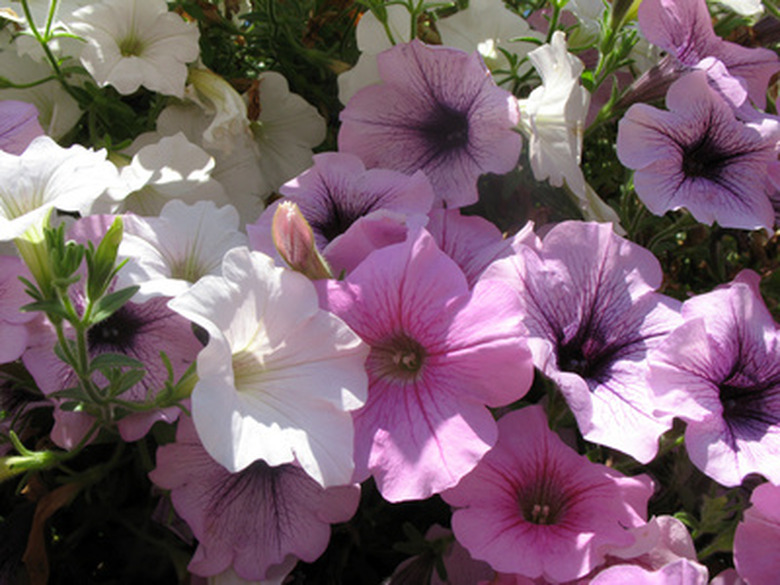Tools For Planting Flowers
A beautiful flower garden adds a burst of color to any landscape. However, the creation of a healthy flower garden requires proper planting techniques. In order to ensure a flourishing garden, it is necessary to use the proper tools. While some tools are used for the actual planting of the flowers, others are designed to prepare the soil for new plants.
Hand Trowel
Dig small holes into which bulbs or flowers can be planted with a hand trowel. Trowels are also useful in planting or transplanting seedlings, as well as uprooting weeds. Trowels typically have a wooden or plastic handle and a curved blade. The tool resembles a miniature shovel but with a longer and narrower proportioned blade. Good-quality trowels have a sturdy handle and a polished stainless steel blade, according to The Organic Gardener.
- A beautiful flower garden adds a burst of color to any landscape.
- While some tools are used for the actual planting of the flowers, others are designed to prepare the soil for new plants.
Shovel
A shovel is necessary to dig larger holes, till the soil and transplant plants. In a gardening environment, it is easier to maneuver a shovel that has a slightly shorter handle. When working with bulbs or smaller plants, a shorter handle is best, according to the Professor's House website. A round-point shovel is the most versatile and the most common type of shovel used by gardeners. Another option is a square-point shovel. Shovels should feel sturdy and be able to withstand penetration of hard earth.
Hand cultivator
Remove weeds or disperse mounds of dirt with a hand cultivator, which can be either plastic or steel. This tool usually has three curved prongs used to pull up weeds or to break up the ground in preparation for planting seedlings or plants. A good-quality hand cultivator should feel solid and be able to penetrate hard earth without bending or cracking. Smaller handles can be awkward to maneuver, according to Gardening Tools Guide.
- A shovel is necessary to dig larger holes, till the soil and transplant plants.
- A good-quality hand cultivator should feel solid and be able to penetrate hard earth without bending or cracking.
Dibble
While not the most common gardening tool, a dibble is very useful when inserting bulbs into the soil. Plant flowers and seeds with it. A dibble has a rounded top and a cone-like, slender bottom. One end of the tool is placed beneath the surface and moved from side to side, forming a hole into which the bulb is placed. A dibble is marked with measurements, typically from 1 to 6 inches, which allows for bulbs, as well as plants and seeds, to be planted at the appropriate depth, according to Gerry's Artsy Wood Stuff.
Spading Fork
Loosen and turn soil with a spading fork, also known as a garden fork. This tool resembles a pitchfork, but its handle is much shorter, the prongs are not as rounded and they are spaced closer together. Spading forks are useful in preparing the soil by pulling apart clumps of roots, removing weeds or tilling the soil. Good quality spading forks are usually made of stainless steel. While hollow-pronged spading forks are available, solid prongs are more resilient and will last much longer, according to Gardening Tips and Ideas.
- While not the most common gardening tool, a dibble is very useful when inserting bulbs into the soil.
- One end of the tool is placed beneath the surface and moved from side to side, forming a hole into which the bulb is placed.
